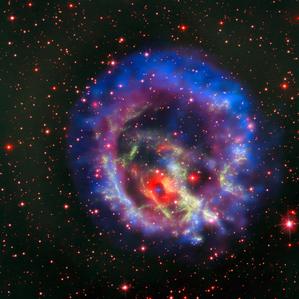Glossary term: 中子星
Description: 中子星是一個非常密集和緊湊的恆星殘骸,形成於大質量恆星核心的坍塌。質量約為八倍太陽質量或更多的恆星在其恆星演化的最後,核心會坍塌,觸發超新星爆炸。坍塌的核心密度大於大多數原子核,並主要由中子組成。這一點的原因是,在大質量恆星極熱和極密的坍塌核心中,質子和電子結合形成中子。中子星的下限質量為1.4倍太陽質量,上限約為3倍太陽質量——超過這個質量,物體將坍塌為黑洞。高度磁化的中子星被稱為磁星。已知的絕大多數中子星以射電脈衝星的形式被觀測到。
Related Terms:
See this term in other languages
Term and definition status: The original definition of this term in English have been approved by a research astronomer and a teacher The translation of this term and its definition is still awaiting approval
This is an automated transliteration of the simplified Chinese translation of this term
The OAE Multilingual Glossary is a project of the IAU Office of Astronomy for Education (OAE) in collaboration with the IAU Office of Astronomy Outreach (OAO). The terms and definitions were chosen, written and reviewed by a collective effort from the OAE, the OAE Centers and Nodes, the OAE National Astronomy Education Coordinators (NAECs) and other volunteers. You can find a full list of credits here. All glossary terms and their definitions are released under a Creative Commons CC BY-4.0 license and should be credited to "IAU OAE".
If you notice a factual or translation error in this glossary term or definition then please get in touch.
Related Media
大質量恆星的死亡
Credit: ESO/NASA, ESA and Hubble Heritage Team (STScI/AURA)/F.Vogt et al. credit link
License: CC-BY-4.0 Creative Commons 姓名標示 4.0 國際 (CC BY 4.0) icons









